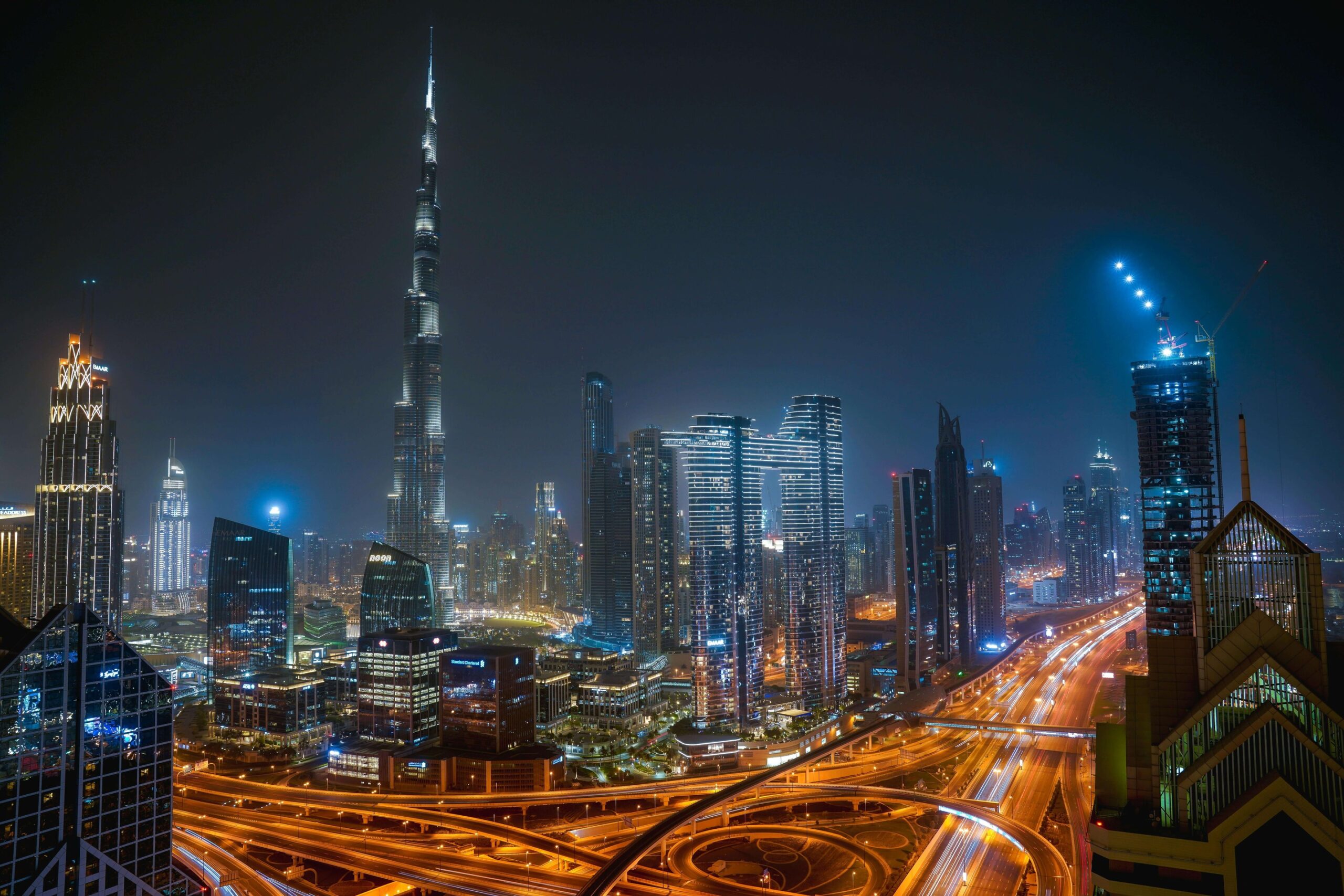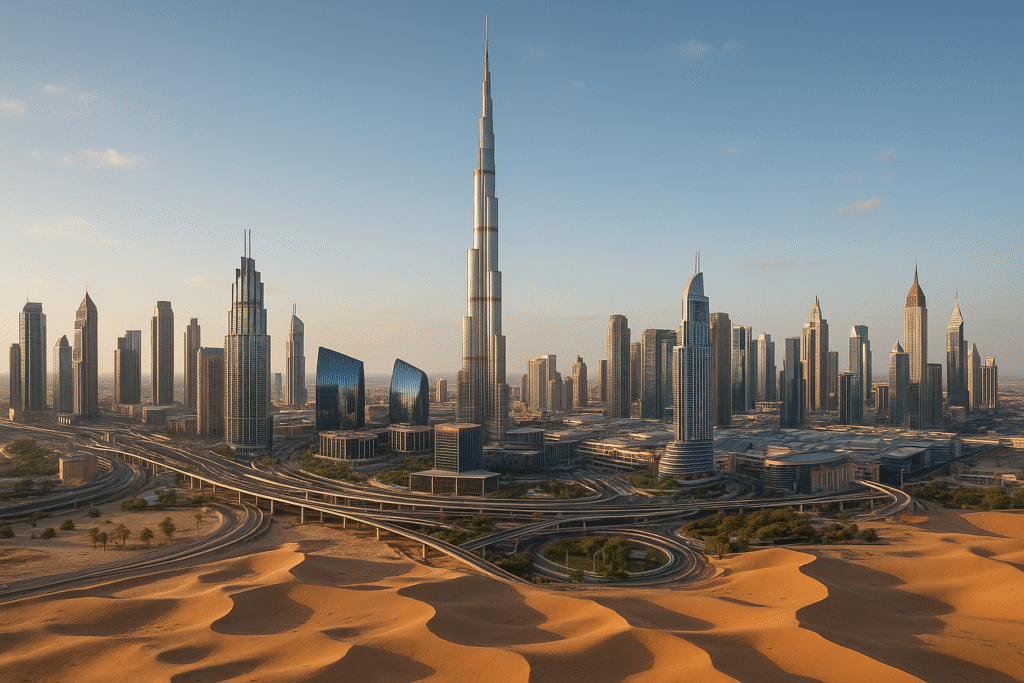In the heart of a region traditionally defined by vast desert landscapes, Dubai has engineered a remarkable metamorphosis, emerging as a global emblem of architectural innovation. The city’s skyline is a dazzling blend of tradition and modernity, where futuristic skyscrapers stand alongside structures that echo the rich Islamic heritage. This unique synthesis has positioned Dubai as a leading light in the world of architecture, drawing comparisons with other iconic cities like Paris and Zurich. As visitors gaze upon its horizon, they witness a testament to visionary ambition and cultural fusion.
The Genesis of Dubai Architecture
Dubai’s architectural journey began as a humble desert outpost, where traditional wind-tower houses and modest trading posts defined its landscape. Over the decades, driven by oil wealth and visionary leadership, the city embarked on an ambitious trajectory. The transformation was not just about erecting taller buildings but creating a skyline that would resonate globally. Dubai’s architects drew inspiration from both the ancient and modern worlds, crafting structures that blend functionality with artistic elegance.
A pivotal moment in the evolution of Dubai architecture was the construction of the Burj Al Arab in 1999. This sail-shaped hotel set a precedent, symbolizing the city’s embrace of bold architectural statements. It became a beacon of luxury and innovation, raising the bar for subsequent projects. The trend of marrying avant-garde design with luxurious functionality became a hallmark of Dubai’s architectural identity.
Burj Khalifa: The Pinnacle of Ambition
At the core of Dubai’s skyline revolution is the Burj Khalifa, soaring at an awe-inspiring 828 meters. This architectural marvel epitomizes Dubai’s audacious spirit and technological prowess, holding the title of the tallest building in the world. Its design is deeply rooted in Islamic architecture, incorporating elements of the Hymenocallis flower, a motif that seamlessly bridges the past with the present.
The Burj Khalifa is not just a structural feat but a cultural phenomenon. It has redefined what skyscrapers can achieve, influencing global architectural trends. The building’s observation deck offers panoramic views of a city that continues to evolve, reinforcing Dubai’s status as a hub of innovation and ambition. Visitors are often left in awe, inspired by the sheer scale and elegance of this towering edifice.
The Palm Jumeirah: Engineering a New Horizon
Dubai’s architectural narrative extends beyond the skyline to its coastline, with the Palm Jumeirah standing as a testament to human ingenuity. This man-made archipelago, designed in the shape of a palm tree, has added a new dimension to Dubai architecture. It represents a bold vision to redefine urban living spaces, integrating residential, leisure, and retail components in a seamless flow.
As an engineering marvel, the Palm Jumeirah has attracted global attention, offering a unique blend of luxury and innovation. It showcases Dubai’s commitment to pushing boundaries, creating habitats that are not just spaces to live but experiences to savor. The island’s opulent villas and hotels offer a lifestyle that is synonymous with the city’s reputation for grandeur and elegance.
The Cultural Symbiosis in Architectural Design
Dubai architecture is a vivid tapestry woven with threads from diverse cultural traditions, resulting in a skyline that is as eclectic as it is harmonious. This cultural symbiosis is evident in structures like the Jumeirah Mosque, which reflects traditional Islamic design while embracing modern construction techniques. The mosque is a beacon of Dubai’s architectural ethos, where past and present coalesce into something uniquely beautiful.
The city’s commitment to cultural preservation amidst rapid modernization is also evident in the Al Fahidi Historic District. Here, Dubai preserves its architectural heritage, showcasing traditional Emirati elements amidst its towering neighbors. This juxtaposition creates a dynamic narrative of continuity and change, inviting visitors to explore the layers of history that have shaped this vibrant metropolis.
The Role of Technology in Dubai Architecture
Technology plays a pivotal role in shaping Dubai’s architectural landscape, enabling designers to push the boundaries of what is possible. From the use of advanced materials to cutting-edge construction techniques, technology is at the forefront of every architectural endeavor in the city. This embrace of innovation is most evident in the dynamic façade of the Museum of the Future, where parametric design meets sustainable practices.
The application of technology in Dubai architecture is not merely about aesthetics but also about functionality and sustainability. The city is pioneering the use of smart building technologies, integrating systems that enhance energy efficiency and reduce environmental impact. This forward-thinking approach ensures that Dubai remains at the forefront of global architectural trends, setting benchmarks for cities worldwide.

Sustainability: A New Chapter in Dubai Architecture
As Dubai’s skyline continues to evolve, sustainability has become a crucial consideration in architectural design. The city is committed to reducing its carbon footprint, with initiatives like the Dubai Sustainable City leading the way. This development showcases how architecture can harmonize with the environment, offering a blueprint for future urban planning.
Sustainability in Dubai architecture is not limited to eco-friendly materials and energy-efficient designs. It encompasses a holistic approach, integrating green spaces and promoting community well-being. This shift towards sustainable practices reflects a broader global trend, aligning Dubai with other cities striving for a more sustainable future.
The Influence of Global Architectural Styles
Dubai’s architectural journey has been significantly influenced by global styles, incorporating elements from various architectural movements. This eclecticism is evident in the city’s skyline, where postmodern skyscrapers stand alongside neo-futuristic structures. The influence of international architects, such as Norman Foster and Zaha Hadid, has brought a global perspective to Dubai architecture, enriching its diversity.
By drawing on global influences, Dubai has positioned itself as a melting pot of architectural ideas, similar to cities like Macao and St. Petersburg. This international collaboration has fostered a dynamic architectural environment, where innovation thrives and new possibilities are continually explored.
The Iconic Dubai Frame: Bridging Past and Future
The Dubai Frame, an architectural landmark, captures the essence of Dubai’s journey from a modest settlement to a futuristic metropolis. This massive rectangular structure serves as a metaphorical bridge, offering panoramic views of both old and new Dubai. It symbolizes the city’s narrative of transformation, celebrating its rich history while looking towards a promising future.
Beyond its symbolic significance, the Dubai Frame is a marvel of modern engineering, showcasing innovative design and construction techniques. Visitors can explore exhibitions that chronicle Dubai’s evolution, gaining insight into the cultural and architectural milestones that have shaped the city. This iconic structure embodies the spirit of Dubai architecture – bold, visionary, and deeply rooted in its heritage.
The Burj Al Arab: A Symbol of Luxury and Innovation
The Burj Al Arab, often described as the world’s most luxurious hotel, is a testament to Dubai’s commitment to creating architectural icons. Its distinctive sail-shaped silhouette has become synonymous with the city, representing a blend of luxury, innovation, and cultural identity. The hotel’s design incorporates elements of Arabian culture, offering a unique architectural experience that is both opulent and immersive.
Inside, the Burj Al Arab continues to impress with its lavish interiors and cutting-edge amenities, setting new standards for luxury hospitality. The hotel’s commitment to excellence and innovation echoes Dubai’s broader architectural ethos, where each structure is crafted with meticulous attention to detail and a passion for pushing boundaries.
The Future of Dubai Architecture: A Vision of Innovation
As Dubai looks to the future, its architectural ambitions continue to soar. The city is embracing new technologies and sustainable practices, crafting a vision of urban living that is both innovative and responsible. Projects like the Hyperloop and the Dubai Creek Tower reflect the city’s forward-thinking approach, promising to redefine urban landscapes and connectivity.
Dubai architecture is poised to lead the way in the 21st century, setting trends that will influence cities around the globe. The city’s commitment to innovation, combined with its rich cultural heritage, ensures that its skyline will continue to captivate and inspire. As new projects emerge, Dubai remains a testament to the power of vision and the endless possibilities of design.
Conclusion
Dubai’s skyline revolution is a captivating narrative of transformation, ambition, and innovation. From its humble beginnings as a desert outpost, the city has evolved into a beacon of architectural excellence, where tradition and modernity coexist in a harmonious dance. Dubai architecture is not just about creating tall buildings; it is about crafting experiences, shaping communities, and inspiring the world. As the city continues to push the boundaries of what is possible, its architectural journey serves as a testament to the power of vision and the enduring allure of human ingenuity.

Recent Posts
15 Floor Plan Graphic Styles That Will Elevate Your Presentation Game
The Role of Shadows in Architectural Storytelling
When Furniture Becomes Architecture: Blurring the Line